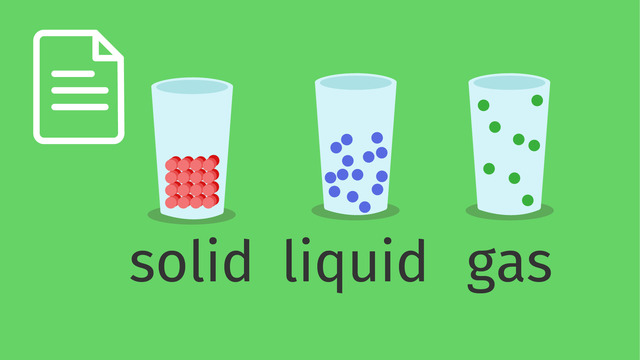Air is everywhere!
Basics on the topic Air is everywhere!
Air – Explained for Elementary School
What are you doing right now? Almost certainly, you are reading this text and breathing in and out. That is because we can't live without oxygen. All humans and animals require it to breathe.
Our planet is cloaked in a gaseous envelope, which we call the atmosphere. But what is the atmosphere? The synonym for atmosphere is the Earth's mantle of air, which is simply made up of various gasses. One major component is the gas nitrogen. Other gasses include the vital oxygen and carbon dioxide, also known as carbonic acid.
The gaseous composition of the Earth's air envelope and the temperature in the atmosphere change with altitude.
Let us take a closer look at the structure of the Earth's air envelope and the various layers of the atmosphere and answer the following question: Why is the atmosphere so important for humans?
The Atmosphere – Earth’s Mantle of Air
The atmosphere makes it possible for life to exist on Earth:
- It protects us from the harmful UV rays of the sun.
- It ensures a pleasant temperature on Earth: not too hot and not too cold.
- It intercepts small celestial bodies. These burn up in the atmosphere and thus do not strike the Earth.
The atmosphere can be divided into different layers: The lowest layer is called the troposphere and extends to about 40,000 feet (12.19 kilometres) altitude. Just imagine that: 40,000 feet (12.19 kilometres), and we humans are less than six feet tall when fully grown.
Interesting facts about the atmosphere
| Translation | atmós = air, steam; sfaíra = sphere |
| Expansion | approx. 6,213.712 miles (10,000 kilometres) (not precisely measurable) |
| Division | into five layers |
You can read about the layers following the troposphere in the figure. Where the exosphere ends is also the end of the atmosphere and the beginning of space.
Troposphere
The clouds are located in the lower part of the troposphere; this is also where weather forms.
With an airplane, you can fly over the clouds and reach the upper part of the troposphere. Many airplanes stay at altitudes between 26,000 and 40,000 feet (12.19 kilometres) during travel.
Outside the airplane, humans could not survive in the higher part of the troposphere:
- The temperature up there is above 50 degrees below zero.
- There is little to no oxygen left in the air.
- The air pressure is also much lower than here on Earth.
No one climbs out of an airplane at 30,000 feet (9.14 kilometres), but some mountaineers try to climb the highest mountain on Earth, which is 29,000 feet (8.84 kilometres) high. This is incredibly difficult because there is hardly any oxygen there either, and the cold and low air pressure pose a great challenge to people.
Stratosphere and the Ozone Layer
But the atmosphere extends much further into the sky: the stratosphere extends up to a height of about 50 kilometres, or about 31 miles. Here, researchers send weather balloons with measuring instruments high up to collect important data. These balloons, however, are unmanned.
The ozone layer is located at an altitude of approximately 18.64 miles (30 kilometres). Perhaps you have heard of this layer in connection with global warming and its effects: The ozone layer surrounds the entire Earth and protects it from the dangerous ultraviolet (UV) rays that come from the sun.
- The ozone layer intercepts most of these rays and allows almost only harmless sunlight to pass through to the Earth. Nature has solved this cleverly.
- Unfortunately, people have interfered and used more gasses that destroy the ozone layer. These ozone-depleting gasses are called CFCs, whose use is now largely banned.
- Attention, don't confuse this with the greenhouse effect, which is also incredibly important for our lives on Earth because it regulates the temperature on Earth. People also negatively affect the greenhouse effect through their actions.
It gets warmer again in the stratosphere, since the UV radiation absorbed by the ozone layer generates heat. However, the temperature usually does not rise above 32 degrees Fahrenheit.
Additional Layers
Following the stratosphere is the mesosphere, the thermosphere, and finally the exosphere. Satellites (an object that circles the planet) circle up here, and only the crew of spaceships can reach these heights. Spaceships and space suits have a very special coating to protect the astronauts from the dangerous UV radiation found there.
After the video, you will find exercises and worksheets on the topic of Earth's air envelope.
Frequently Asked Questions on the Topic of Air and the Atmosphere
Transcript Air is everywhere!
Uma is already very excited. She is camping out in the fresh air today. The tent is up, what's Uma pumping right now? A beach ball! Air is everywhere, even in this ball. Let's find out everywhere that air can be and what it can do. Wait a minute! Can we even see air? Let's begin with a little experiment: blow into your hand! Can you feel the air on your skin? Yes, we feel air, but we can't see it. Hmmm, what is air actually made of? Air is made mostly of something called invisible gases. You've probably heard of oxygen, but it's also made of other gases called nitrogen and carbon dioxide. Humans and animals need oxygen from the air to breathe because we cannot live without it. But air also makes many things possible everyday, like pumping up balls. Here, air needs space. If you blow up a ball, it fills with air and gets bigger and bigger until no more air fits in it. Then it's ready to play with! Air not only takes up space, but air also moves things, like this pinwheel here. It is driven by moving air, or what we usually call wind. The wind makes the blades move around. Look! The air carries this paper aeroplane and, eventually, the air also slows the plane down so it falls to the ground. You also feel air slowing you down when you ride your bike into the wind. Think about dandelion seeds too! They are like little parachutes carried by the air for a while and then slowly fall to the ground. Air can also carry sound. Do you hear that? It sounds nice. When you sing, the air around you moves. These movements reach our ears and we hear a sound. Try it out for yourself, la, la, la! Air can also carry smells! Have you ever smelt biscuits baking or candy floss at a fair? What's that smell? Before we see what it is, let's remember! Air is everywhere and it does many things! Air needs space. Air moves things. Air carries things up and slows them down. Air also carries sounds and smells. Pay attention to what the air around you can do! Tell us about it in the comments.
Air is everywhere! exercise
-
What is air made up of?
HintsWe need oxygen for breathing.
Which of the options are not gases? These will not be correct options.
There are 3 correct options.
Solution- Air is made up of gases including: oxygen, nitrogen and carbon dioxide.
- Smells, water and sounds are not gases.
-
What can air do?
HintsWhen you pump air into a ball, the space is filled with air as it gets bigger.
Moving air or wind can move things and can carry things up or bring them down.
Solution- Air needs space - pump and balloons.
- Air can move things - kite, aeroplane and pinwheel.
-
What are the characteristics of air?
HintsThere are four correct answers.
Dandelion seeds slowly fall to the ground.
When you sing, the air around you moves.
Solution- Air needs space.
- Air or wind can speed things up or slow things down.
- Air can carry smells.
- Air can carry sounds.
-
Match the characteristics of air to the examples.
HintsIf you blow up a ball it fills with air and gets bigger.
Air might slow you down when you ride your bike into the wind.
You can smell biscuits baking or candyfloss at a fairground.
When you sing, the air around you moves and when it reaches your ears you hear a sound.
Solution- Air needs space - beachball.
- Air or wind can slow things down - bicycle.
- Air can carry smells - barbeque.
- Air can carry sounds - music.
-
What do we need to breathe?
HintsThis is an invisible gas.
Human beings and animals cannot live without this gas.
SolutionWe need oxygen to breathe.
-
Is there air in space?
HintsCan air be seen?
If you blow up a ball it gets bigger and bigger because air needs space.
What aspect of air moves things?
How do we hear music?
Solution- Air is invisible but it can be felt.
- You can pump your wheels with air as it needs space.
- Humans need air to breathe.
- If you see something move by itself then you know there is wind.
- You can listen to music as air carries sounds.


 Do you want to learn faster and more easily?
Do you want to learn faster and more easily?













You can see hot air
Wow
And I'm also in 2nd place
I think I got a it confused but other than that I LOVE IT😸😸😸😸😸
Lovely